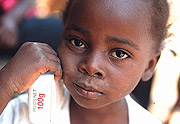Rwanda’s war against HIV infections
Nine-year - old Jean Marie‘s mother died when he was only two years old. His father passed away a year after.

Globally 2.5 million children under 15 years live with HIV
